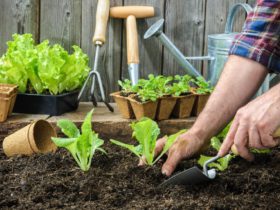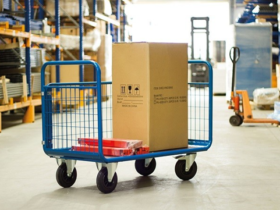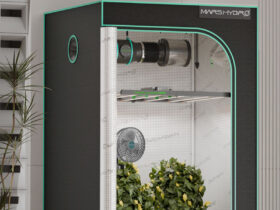For farm and rural properties, storage sheds are essential structures that offer storage solutions for a range of items, including equipment, machinery, tools, supplies, and feed. This article offers a central view of storage sheds, particularly farm sheds, including their benefits and uses, as well as factors to consider when designing and installing them.
Understanding Storage Sheds
Storage sheds are movable, small structures built to safeguard valuable equipment, supplies, and assets against weather conditions. They come in different sizes, designs, and materials to suit distinct storage requirements and individual preferences. Storage sheds work best in the farm setting to organise and safeguard farming equipment, animal feed, hay, and grain, among other items.
Benefits of Storage Sheds for Farm Sheds and Rural Use
Storage sheds provide numerous benefits for farm and rural properties, and they are essential investments for farmers, ranchers, and rural landowners. These benefits include the following aspects:
- Increased storage space: Sheds, equipped with storage units, shelving, and benches, efficiently organise farm equipment, machinery, tools, and supplies, reducing clutter and optimising space use, ensuring easy access to items within arm’s length.
- Protection from the elements: A storage shed is a safe and reliable shelter for valuable possessions, designed to withstand various weather conditions and made of durable materials that prevent damage and climate depreciation.
- Versatility: Many storage shed designs are tailored to specific functional requirements and individual preferences. Whether it is a garden shed for storing gardening tools or a large shed for equipment and machinery storage, there is a design for every person’s needs.
- Cost-effective: Storage sheds, which include procurement and maintenance, offer cost-effective long-term service at a moderate cost, reducing expenses for usable storage space and increasing turnover in farm enterprises compared to additional built facilities.
- Flexibility: The storage shed can be temporary or on permanent space and can be moved or reallocated with continuity. Thus, farmers can quickly move storage sheds whenever necessary, eliminate options or cut other risks.
Applications of Storage Sheds and Rural Properties
Storage sheds find various applications on farms and rural properties, serving multiple storage needs and purposes. Some common uses include:
- Machinery Sheds: These keep tractors, harvesters, cultivators, and other machinery and instruments. This is used as a cover; hence, machine life reduces the maintenance cost, downtime and repair work.
- Hay and Grain Storage: Sheds are used to store hay, straw, grain, and other sources of food, as well as a place to sleep for all animals like cows, goats, etc. Developed vent systems and maintained hygienic conditions to ensure the life of stored things, which retained their value and quality.
- Livestock Shelters: Since it used to store all the grains and straw, this gave extra space to shed the cows, cats, etc. Animal safety is assured with these shelters.
- Workshops and Tool Sheds: The shed itself is used as a workshop and tool shed. All tools and other equipment are kept here for maintenance purposes. The bench is fitted for repair work.
- Chemical and Hazardous Material Storage: In addition to all this, the store is used to store chemicals, fertilisers, insect sprayers, etc. It would be trained in the angle, well maintained, and perfect ventilation is done to avoid any difficult results.
Design Considerations for Farm Sheds
When designing a storage shed for farm or rural use, several factors must be considered to ensure optimal performance, functionality, and durability. Some key design considerations include:
- Size and Layout: To optimise storage facilities and design, consider factors like size, layout, height, width, length, and interior design, considering your storage needs, available space, and expected expansion.
- Site Selection: When building a storage shed, consider factors like administration, distance from other homes, car and instrument access, natural drainage flow, distance from lowland or wasteland, flat land, and no obstruction when selecting a location.
- Building Materials: Choose storage shed materials like steel, timber, and concrete based on life, price, and maintenance needs for farm sheds, offering varying strength, weather resistance, and aesthetics.
- Roof Design: Select the shed roof design based on the anticipated shift in rainfall, snow load, and ventilation. Design options include gable, skillion, hip, and curvy roofs, each with a different aesthetic and functional effect.
- Wall Cladding and Insulation: Choose wall cladding and insulation to improve energy, weather resistance, and aesthetics. Cladding options include colorbond steel, coloured iron, insulated panels, and composites that differ in luminaire, insulation, and price.
Installation and Maintenance of Farm Sheds
Ensuring proper installation and maintenance of storage sheds on farms and rural properties is crucial to the agricultural sector. When correctly done, storage facilities can provide high longevity and positive results. Consider the following aspects for the proper installation and maintenance of farm storage sheds:
- Professional Installation: Hiring a contractor or shed builder with experience in constructing farm sheds is essential. Choose a company with a good track record of delivering quality sheds that can meet your needs and preferences.
- Site Preparation: Clear vegetation, scrape the ground, and ensure proper drainage on the construction site. Ensure accessibility for quick access, obtain necessary approvals from authorities, and apply for permits to start construction.
- Foundation Construction: Follow the shed manufacturer’s recommendations and other building code standards. Consider concrete slabs, piers, footings, anchors, and other foundation options on your site.
- Assembly and Construction: Always follow the manufacturer’s guide, regardless of the type of shed to assemble and construct. Ensure the equipment uses the right tools, equipment and safety to make the construction perfect if you cannot assemble it.
- Weatherproofing and Sealing: Weatherproofing is essential in protecting the shed from rust, corrosion, and moisture that can infiltrate the building. It can facilitate checkups and maintenance since you will be able to see wear or damage exposed to the naked eye.
In Summary
Storage sheds are vital structures, custom steel sheds that complement farm and rural activities and offer crucial storage spaces for equipment, machinery, tools, supplies, and livestock feed. Farm and rural activities should consider various shed designs depending on possible uses, such as machinery sheds, hay sheds, grain sheds, and workshop sheds. Understanding the use, benefits, design considerations, and maintenance demands will enable farm and rural homeowners to identify the best storage shed solutions. As a farm and rural owner, you should unlock the potential of storage sheds, steel shed builders and explore their options for improving efficiency, productivity, and farm sheds.










